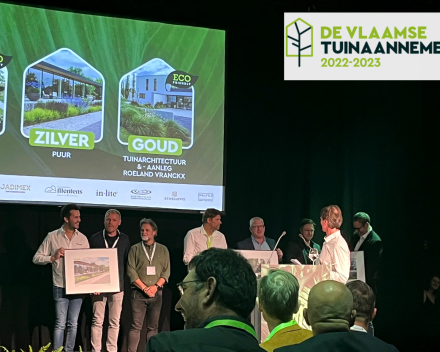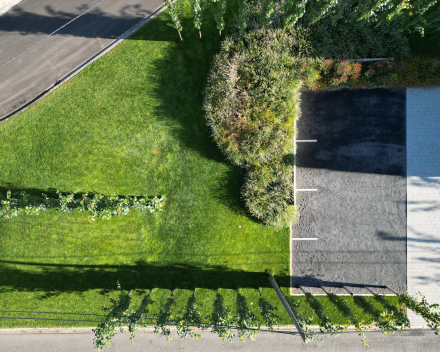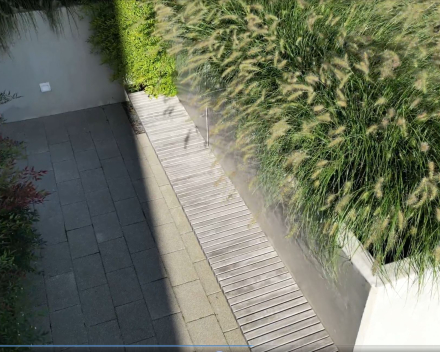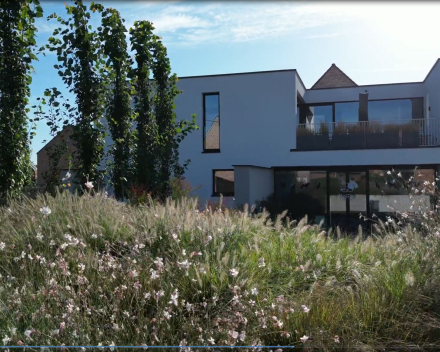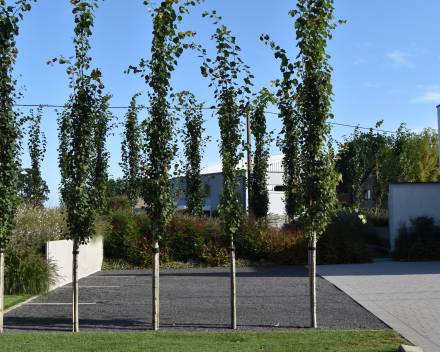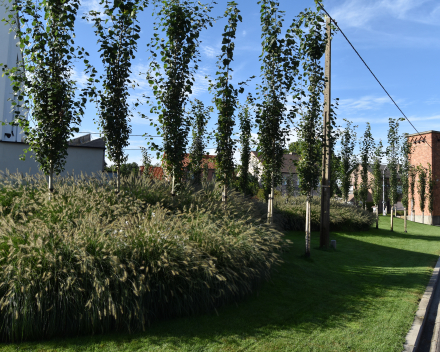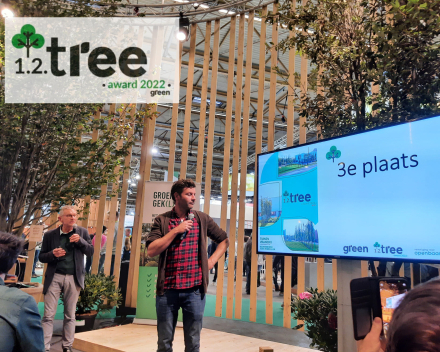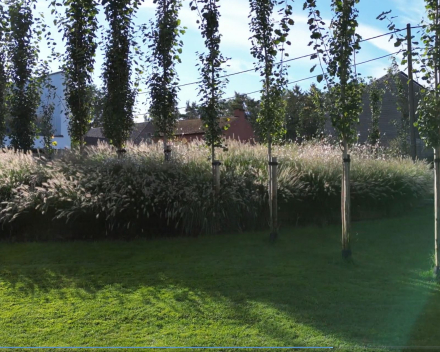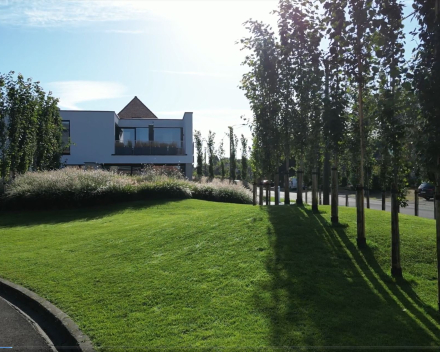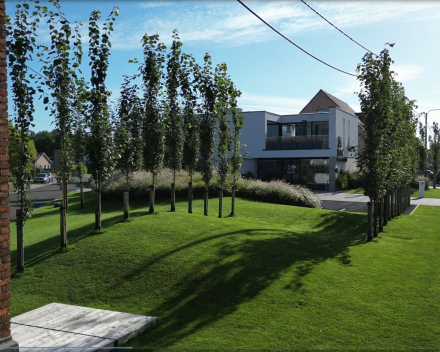In the spotlight: Landscape architecture Vranckx
10/01/2023 - 07:54
Landscape Architecture Vranckx in Belgium recently won two accolades. Not only did they win the prestigious Flemish Landscaper 2022-2023 award in the category gardens 250-1000m². They also obtained bronze in the 1 2 Tree Award, the prize for the most beautiful tree project in the "private projects" category. Something Roeland Vranckx, as an ultimate tree lover, is rightly very proud of. We had a very pleasant chat with Roeland...
Congratulations again on the awards, Roeland. It’s a stunning project that won. We gladly share it with our readers:
We are also thrilled to be able to ask you some questions. Let’s start with the beginning:
How did you get into landscaping?
In fact, I have been in the landscaping business since childhood. My father was a landscape architect and contractor. And so was my grandfather. I studied landscape architecture in Vilvoorde. Just like my father. My grandfather in turn went to horticultural school. I took an additional course in urban planning and even did traffic engineering for a while. But I ended up following in my father's footsteps.
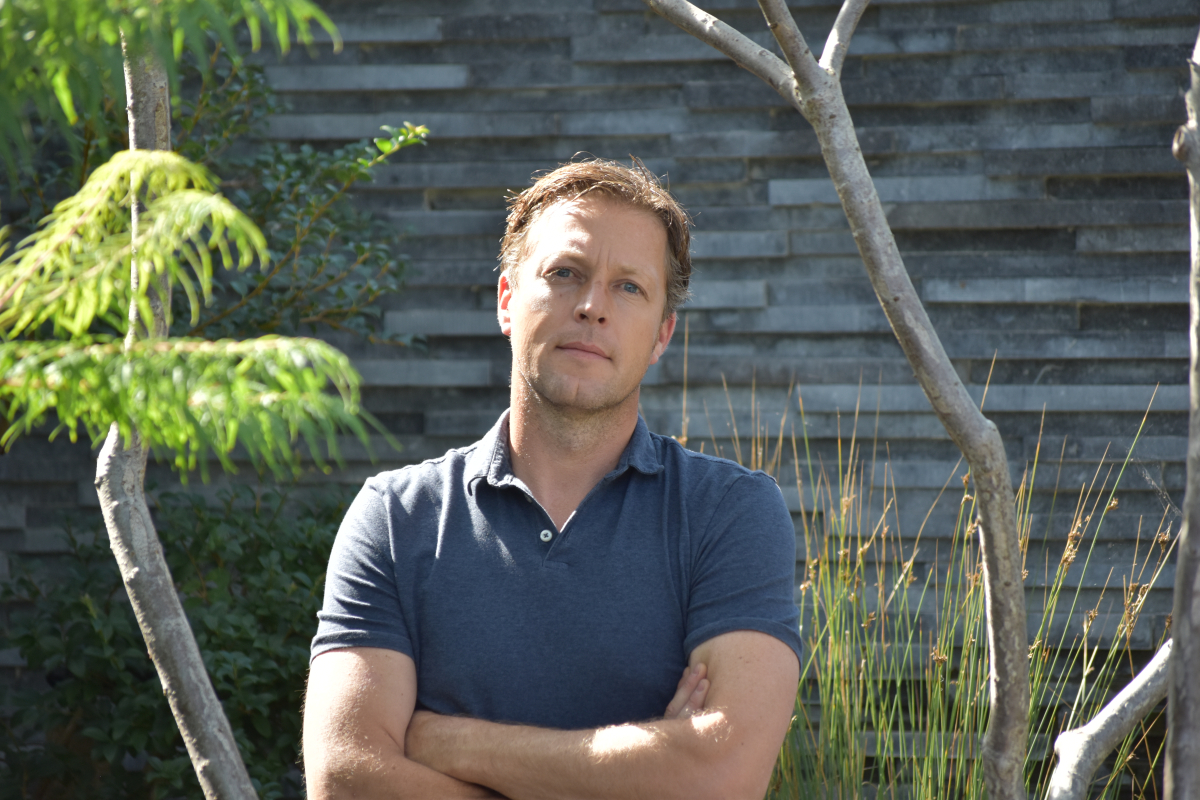
I used to do a lot of gardening myself, under my father's supervision, but now I have a whole team that does the actual planting. I mainly do office work now. But I know what a garden entails, the feeling of earth sticking to your fingers, dirty hands, gaps, ... (laughs)
How many people do you work with?
Permanently eight. But in the busy summer months, that rises to 10. I have had a permanent team for several years now. It’s a strong well-balanced team. Not many companies work like me, doing everything from design to construction. These days landscape architects are much more likely to hire independent garden contractors to do the actual work. Doing everything yourself is a major asset. And I don't just mean for practical reasons. Doing everything yourself adds to the credibility of the project, its authenticity. We "make" a garden with feeling. We draw out a plan with feeling. We know our customers through and through: we know what kind of garden they want, down to the last detail. And then we carry out the work with just as much feeling.
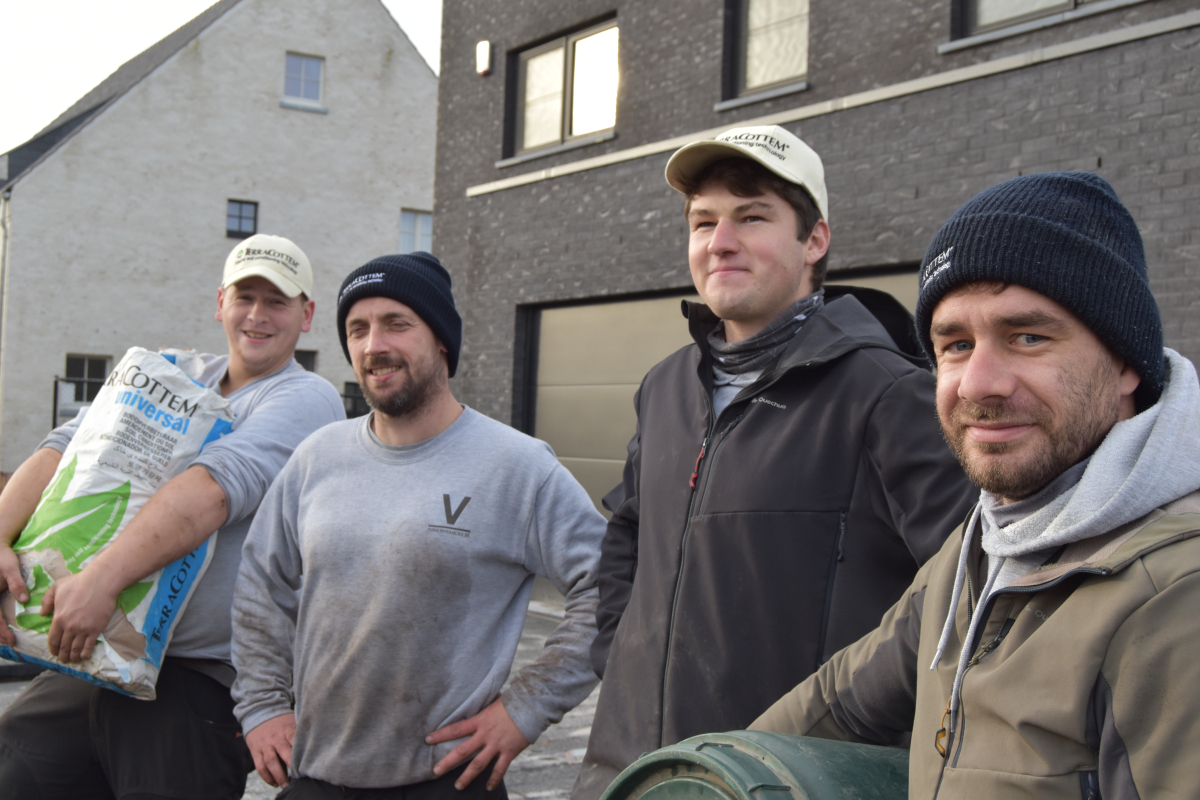
Have the accolades brought you new business?
No, we didn't really receive significantly more enquiries. I happened to be talking about it just now with my employees. People might expect you to immediately get masses of extra e-mails and requests. But it doesn’t work like that.
So how do you find new customers?
Mainly through word of mouth actually. Credibility is really everything for me. The Flemish Landscaper prize, the 1 2 Tree Award, and what appears on social media, for example, that's good to boost credibility. Business, entrepreneurship: everything revolves around credibility. But not only towards new customers, but also towards old ones. If something appears in the media, those people react to it! That publication also makes those previous customers proud again (gloats).
Also, credibility towards old and new staff members. And of course, credibility towards suppliers. Otherwise, we wouldn't have had this conversation for example (winks).
“That's my golden word: 'credibility'. Also authenticity we were talking about just now.”
Coming back to the 1 2 Tree Award. You said you were especially proud of that. Why?
For me, being able to plant trees is the most beautiful part of the job. Trees have such a long lifespan and such a big impact. A lawn is "just" a lawn. A tree gives strength.
So, what is your favourite tree?
I still think the classic native oak is one of my favourites. But with the processionary caterpillar and so on, it is less loved. I find birch trees super mysterious. It is so special. It just appears: if you have a vacant lot, that's the first tree that will settle there. And so gives the opportunity to other trees to take over.
I use it to make furniture myself: a chandelier, table legs, …
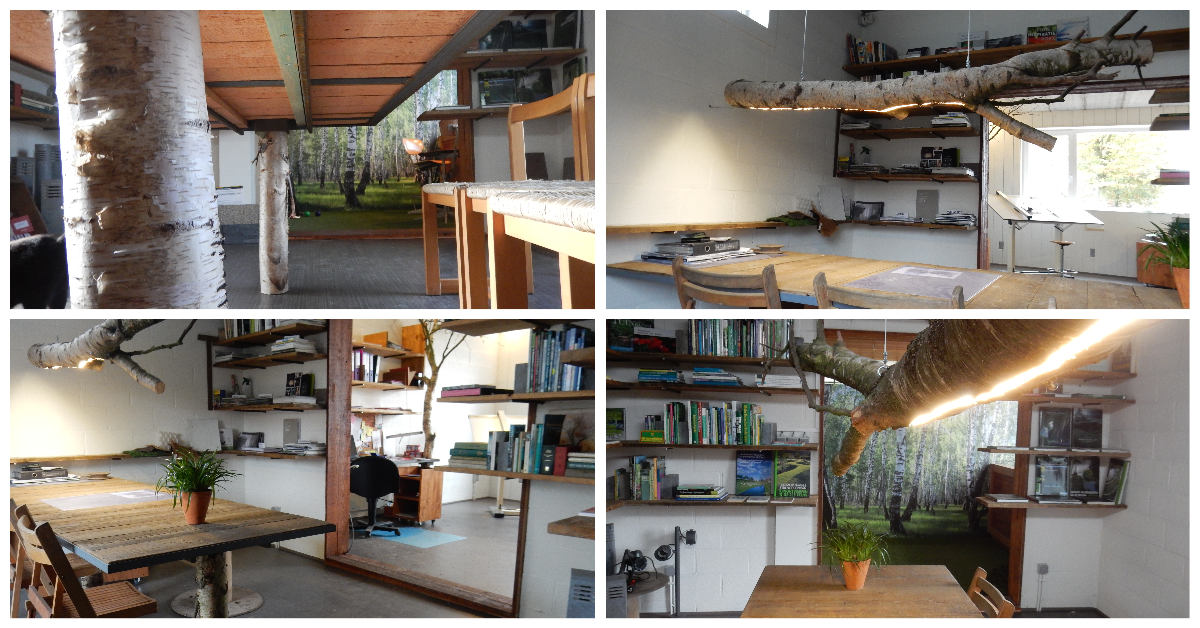
Do you take climate change into consideration when choosing trees?
Absolutely! For the winning project, I used poplars. The jury told me that these are not "climate trees", but they really are! Just go to the Greek islands, where I often go on holiday: they are full of poplars. For me, this is a sign that there is in fact still far too little knowledge of this matter. What is a "climate tree"? There are also many untruths in literature. Amelanchiers are said to be climate trees. But that is a tree that suffers very quickly in summer. To me, a climate tree is a tree that can cope with the "extremes" (heat, drought, but also excessively wet conditions).
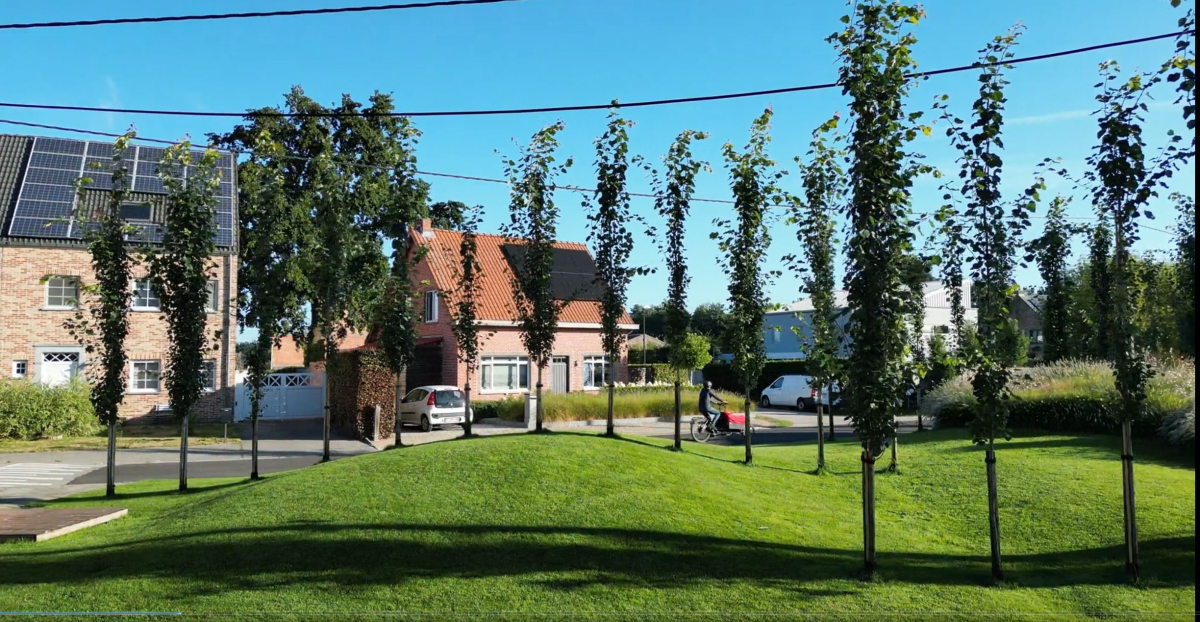
So, do you use TerraCottem arbor or TerraCottem universal when planting trees?
To be honest, I have only used TerraCottem universal in my projects. But in a subsequent order now, I will definitely subdivide: TerraCottem universal, TerraCottem arbor and TerraCottem turf.
|
TIP: When we dig a plant hole in a garden, we add good soil and invariably spread TerraCottem granules on the bottom layer of the plant hole at a depth of about 50 cm. The roots of trees and shrubs will then root faster and deeper, establish better and survive droughts. |
|---|
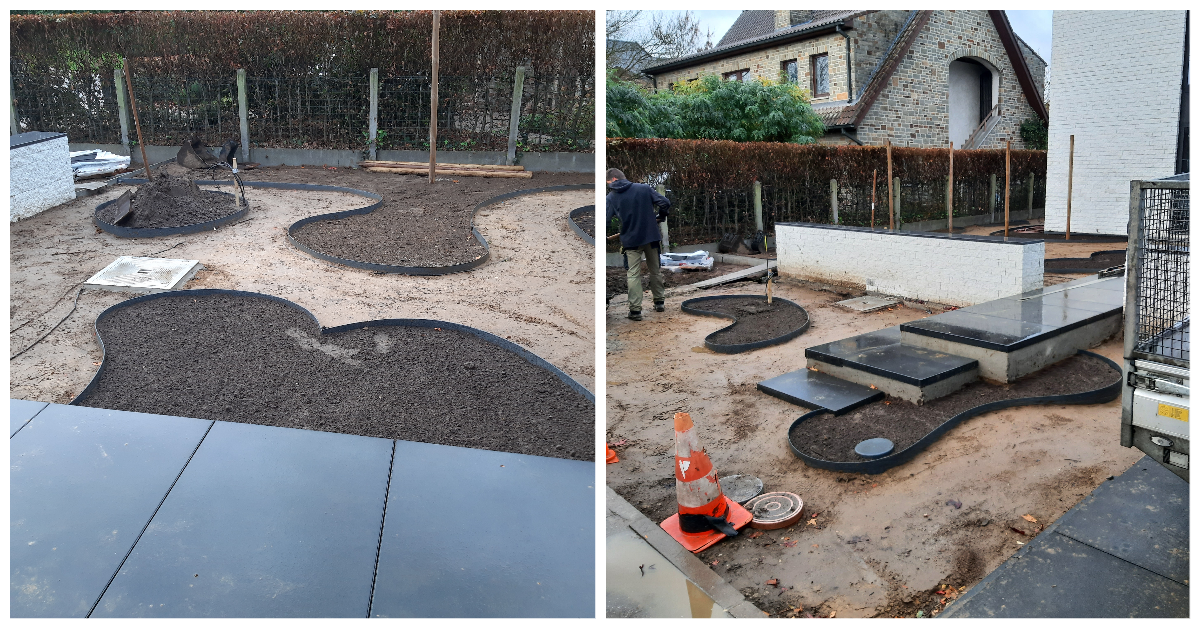
How did you come into contact with TerraCottem? Through your father?
Absolutely. Yes, he used it too. Even though there used to be much less investment in soil improvement then. "Peat" was added to everything. That what the golden remedy (laughs). Literally everything was planted in peat. In fact, it was absurd. But gradually there was an evolution. First came compost types, headed by green compost. Now there are many types. Fortunately, the current range of soil improvement products is fantastic, in terms of structure improvement, nutritional value, water absorption, ... Phenomenal. Kempen sandy soil is often pure desert soil. We regularly work on very thin profiles of a thin layer of dark soil and with compacted yellow soil underneath.
By the way, I used to do an internship with Willy Reynders. He literally made us walk around with TerraCottem in our jacket pocket: we had to put some of it in the soil with every plant (laughs).
It also took a while to convince customers of the need for soil improvement. In fact, as landscape architect or garden designer, we also have to be a bit of a "salesman", but I don't like doing that. And I am NOT a salesman. Not in the sense that I am out for profit. For me, what matters is the soil quality. After all, that is the basis of all life. That is like the foundation of your house, which then also lives.
“The foundation of a beautiful garden is living soil.”
"Selling" TerraCottem is not easy. I actually explain on a weekly basis what it is. The same goes for my other products by the way, explaining its purpose... But it remains an abstract thing for people. They only want to see the end result: a beautiful garden, with a nice mix of plants. So, I start explaining: why the structure of the soil is important, the nutritional value, that a soil has to be moist, etc. We also often struggle with the groundworkers, because they’ll say something like "30cm of soil is enough". And every single time we have to refute that statement to our customers: a tree simply cannot grow well in 30cm.
“Delivering a beautiful garden is a struggle to convince people to invest in the quality of their soil”.
The beautiful pictures of the gardens and all our references: this is simply not possible without a good foundation.
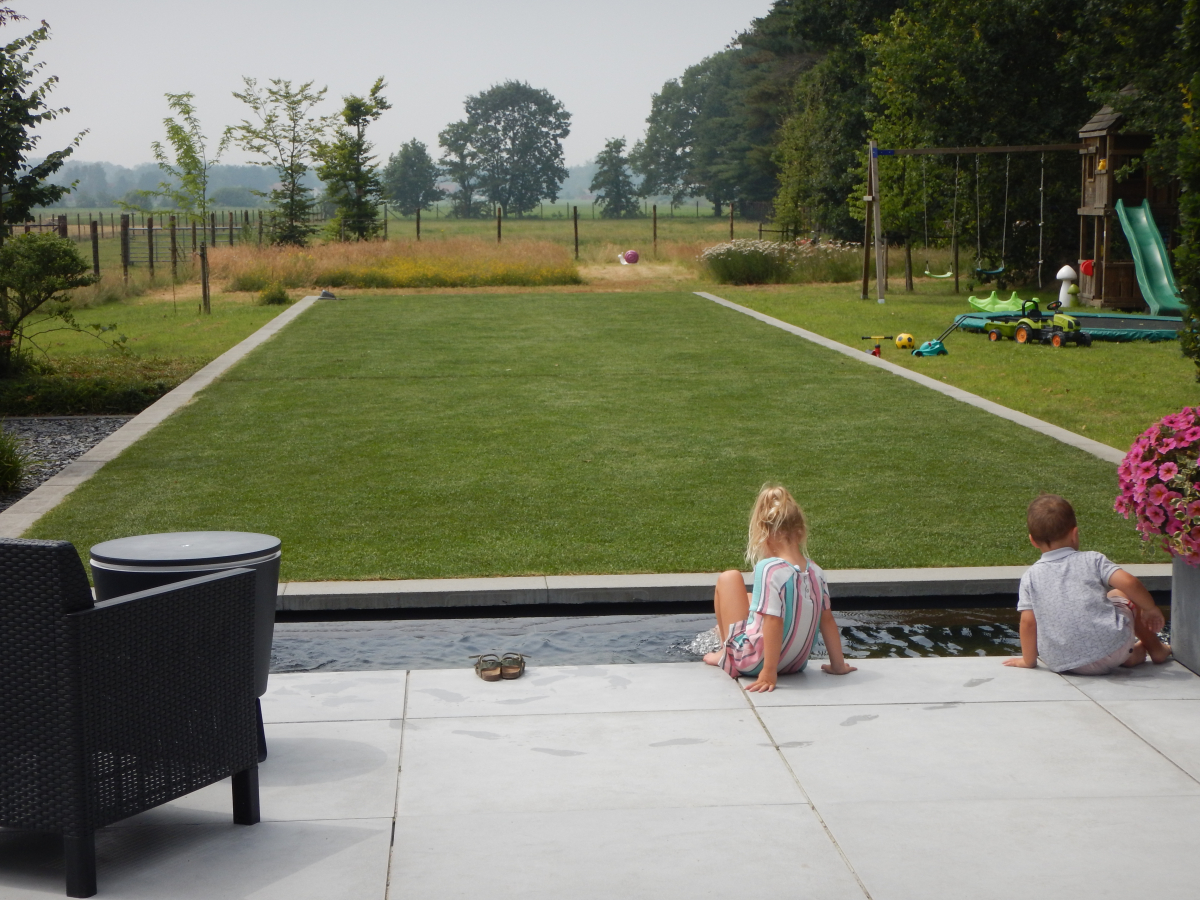
You probably also get backlash from the green guys, who think this kind of soil improvement is not necessary. Because then you are not using natural conditions. But every garden is an artificial thing. A lawn is something super artificial. So why not use soil conditioner?
|
TIP: When we install grass concrete paving, we always incorporate TerraCottem in the substrate underneath (even if it is not specified). Grass in concrete paving dries out quickly in prolonged droughts. TerraCottem is a perfect remedy for this, to prevent and counteract rapid drying out. In fact, the use of TerraCottem in the subsoil is indispensable and an absolute must! |
|---|
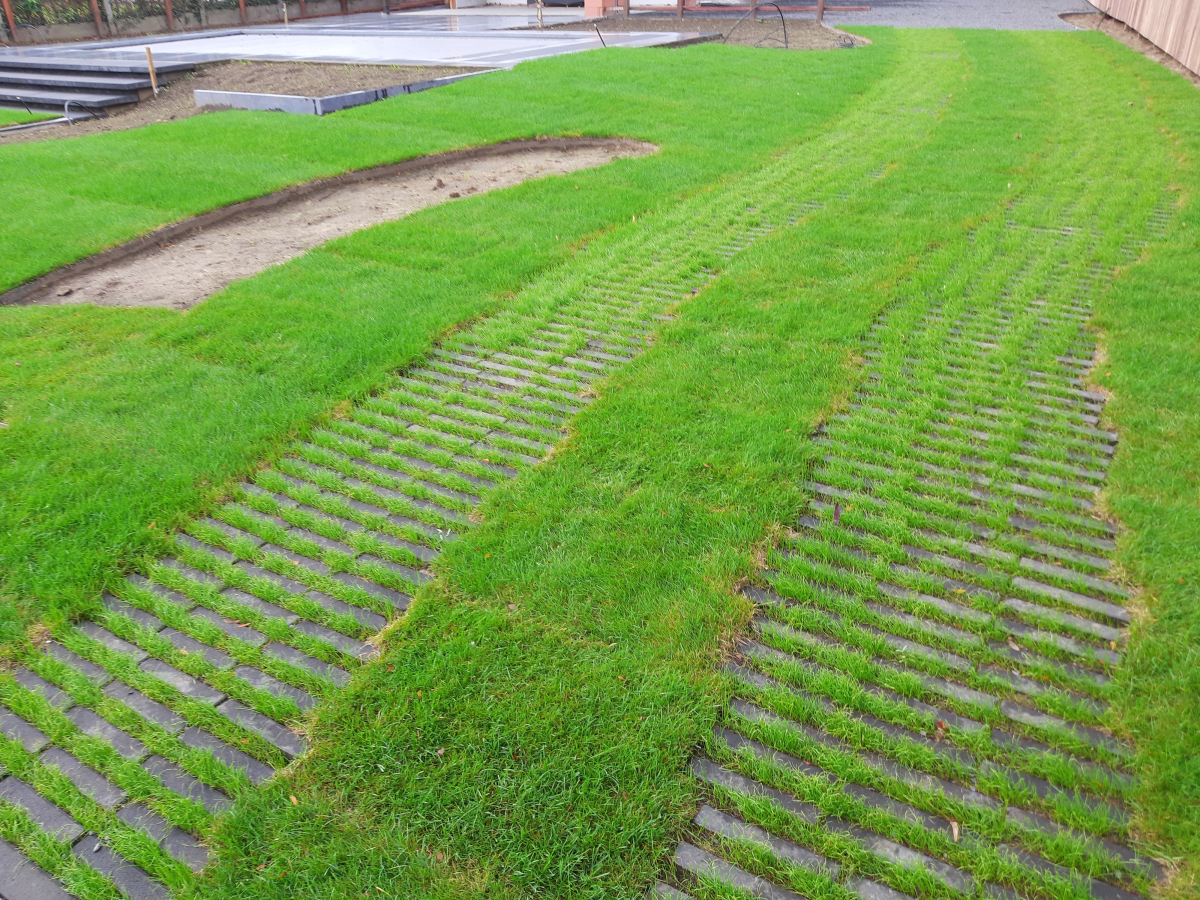
What do you say to your customers: why do they need TerraCottem?
It's really striking to see that the gardens, which we have built with TerraCottem over the last 5-10 years, are recovering very quickly after the droughts we are having in recent years.
“We tell our clients we like to come back to the gardens we built in order to learn from them.”
It's fantastic to see the restorative power of those lawns! It’s at that moment that clients who had TerraCottem incorporated into the soil, notice that their neighbour has a straw-coloured lawn and their lawn is completely recovered. It’s when they see that the financial effort has paid off. Those abstract words at the time of taking the decision have now been translated into a clear picture.
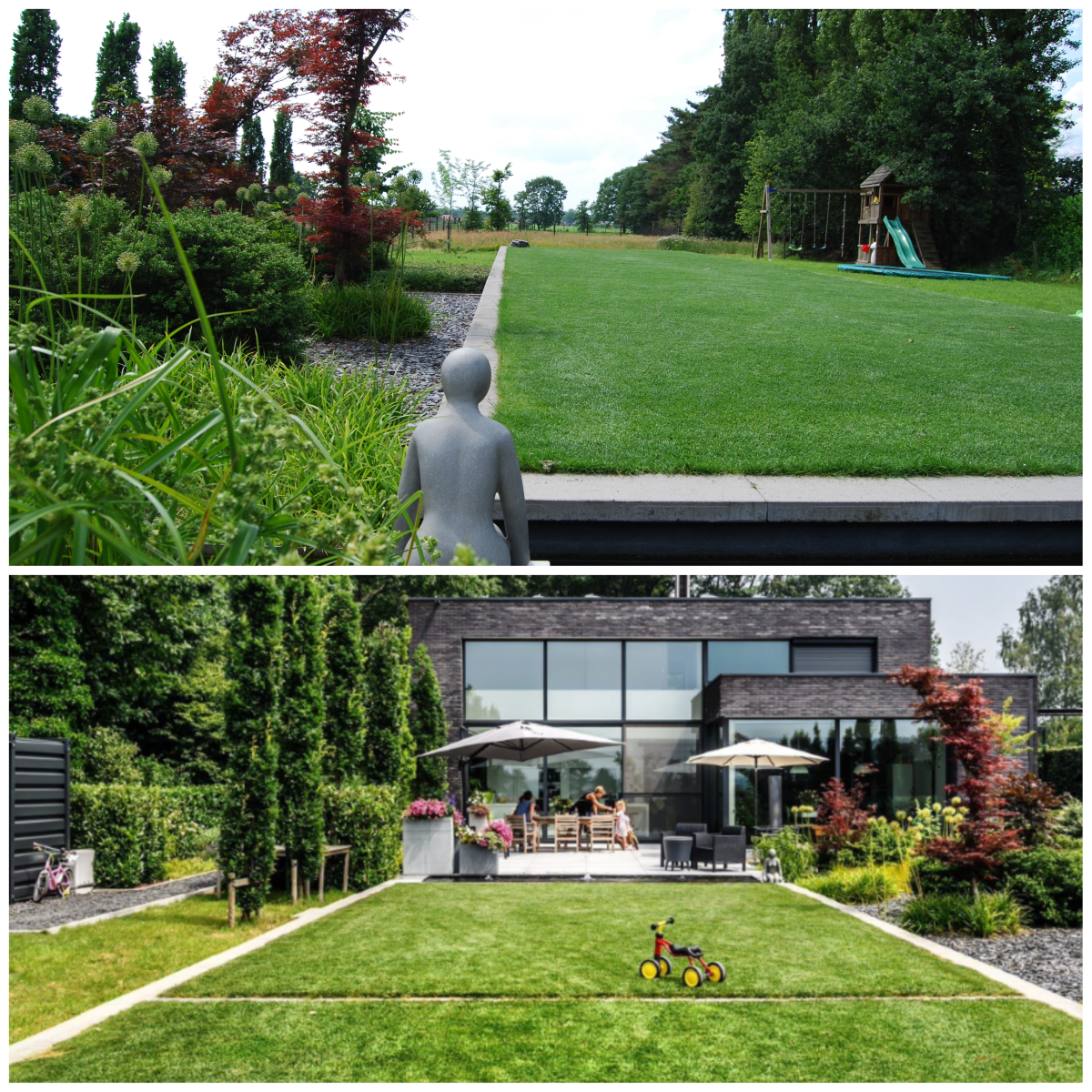
Your website, with those frequently asked questions page is great. The answers, in common parlance, are the things we can also say to our customers.
Do you have a particular "style"?
No, I just want to be contrary to that (laughs). I don’t like the fact that some landscapers promote their particular style with a lot of pretence. I think that, as a landscaper, you just really have to be very humble. Because your knowledge is never complete. And also because the most unusual things just challenge me. With a style all gardens become copies of each other (sigh). I just like to colour outside the lines. I could only win that prize with the Flemish Landscaper because the client said "go ahead". The result was masses of trees on various powerful lines, in a private garden, in the middle of a village: that hadn't been done yet.
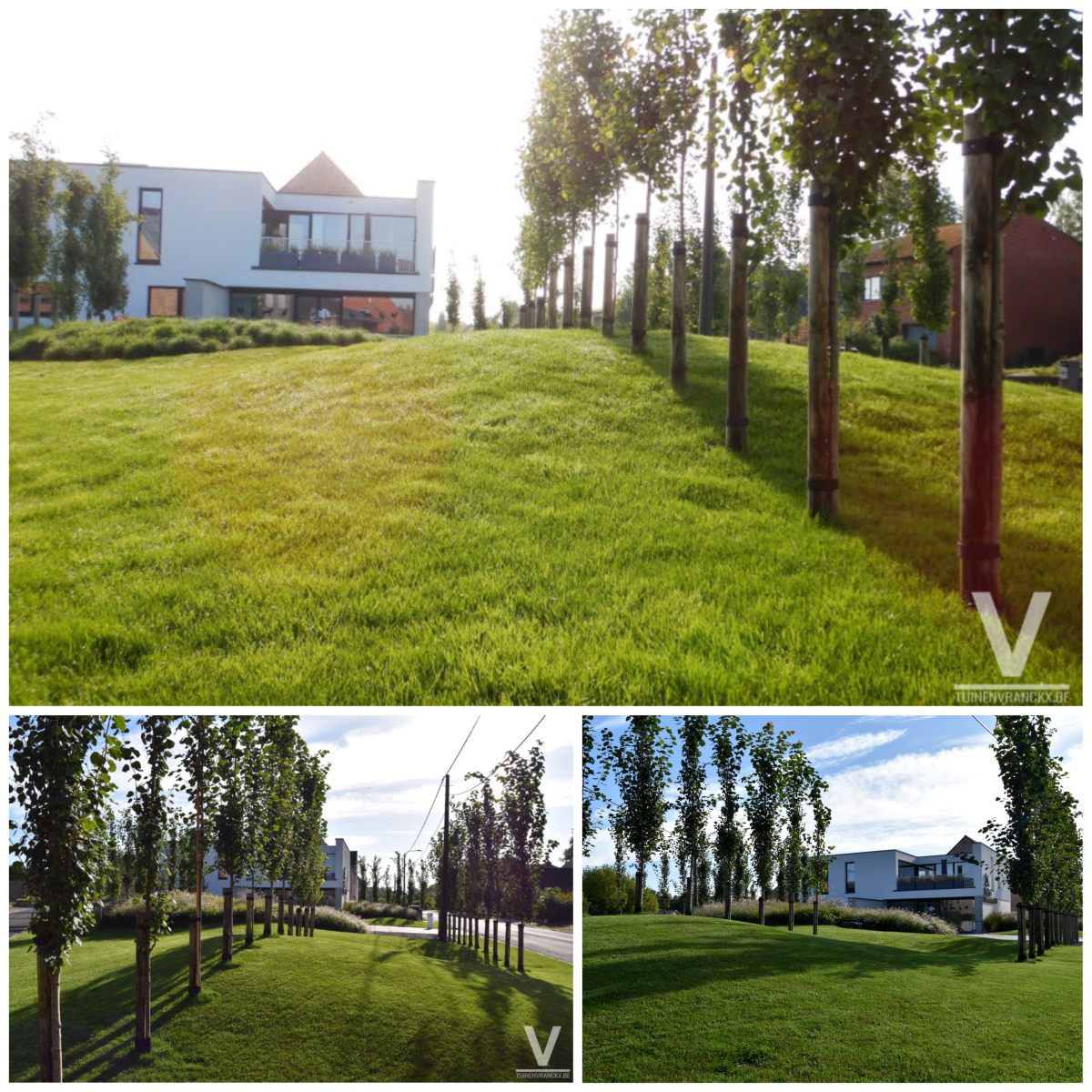
Who are your "examples"?
I honestly have far too little time to delve into who is currently doing nice work and who is not (shows a pile of professional literature on his desk). But I do look up to Wirtz, Belgium's best-known landscape architect. Because he really thinks - or can think - out-of-the-box with clients with often unlimited budgets. And in the Netherlands it’s of course, Piet Oudolf, the classic. I admire both mainly for what they have achieved in their lives, for the name they have made.
Perhaps one last tip?
|
TIP: We often come across gardens where the owners, in the past, planted trees in compacted (firmly driven) and poor soil. Those trees become diseased and are the first victims of unwanted insect pests, grow crooked (due to lack of roots), have an undersized crown, etc. When we renew the lawn, we always foresee that around the suffering tree, we dig out the soil and enrich it (respecting the current tree roots, of course) by adding TerraCottem, among other things. The years after the intervention, we clearly see time and again a huge growth of the trees. The tree roots immediately extend wider and have a better “grip”. |
|---|
Thanks for the nice chat, Roeland. Good luck with your future projects!
I have perhaps a fun fact. Kurt Demeyer, the owner of the winning project (who is a vet) was taught botany by Professor Van Cotthem, the inventor of TerraCottem.
Wow, small world! We're definitely going to tell him that. He'll be very proud 😊
More information about Roeland?
Tuinarchitectuur Vranckx
Rauwelkoven 130
2440 GEEL
T: 0486 112598 [Roeland Vranckx]
E: info@tuinenvranckx.be
W: www.tuinenvranckx.be
If you know someone who would also like to read this article, feel free to share:
Would you like to be in the spotlight too?
You can!
Send a quick email to marketing@terracottem.be and we will schedule an online meeting together.
Would you like more information?
Contact usWould you like more information?
Contact usTerraCottem Intl. SL
Apartado de Correos 4511190 Benalup (Cádiz)Spain

